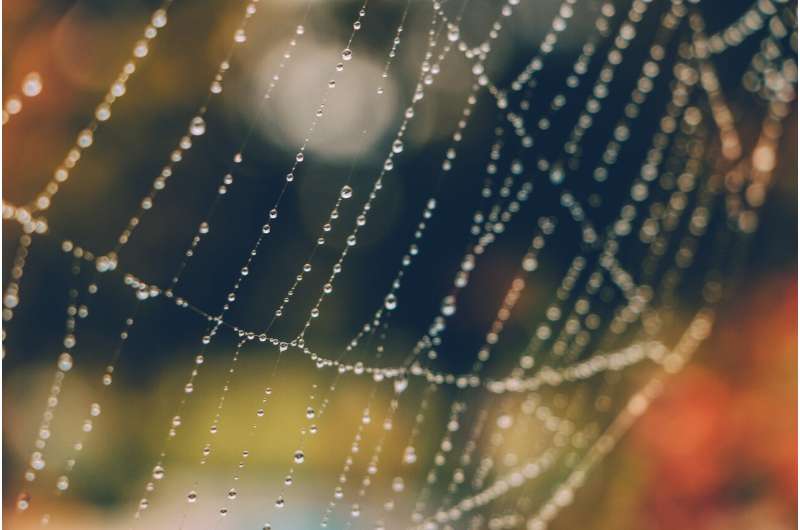July 23, 2020 report
Ionic spiderwebs that imitate dual functions in real spiderwebs

A team of researchers from Seoul National University and Eumam Middle School has developed a type of ionic spiderweb that is able to imitate dual functions found with real spiderwebs. In their paper published in the journal Science Robotics, the group describes their spiderwebs and possible uses for them.
When spiders make their webs, they are careful to use the minimum amount of material. Prior research has shown that excess webbing collects extraneous material, which results in the web becoming messy and less effective. With minimal material webs, spiders wait for prey to adhere to the strands (they can feel the web vibrating), then rush over and add more binding material before their meal can escape. This approach helps to keep a cleaner more efficient web.
In this new effort, the researchers sought to replicate this approach using stretchable nylon to make an ionic spiderweb. Their goal was to expand the range of soft robotics tools available to engineers. Prior research has shown that robots designed to use electrostatics as a means of gently grabbing or sensing, including capacitive tactile sensors, dielectric elastomer actuators and adhesion grippers, can become overburdened with undesired material in ways similar to spider webs. To replicate the duality of catchability and cleanliness, the researchers constructed webs using just a single pair of ionic threads. Their electrostatic properties allowed them to be used as capturing material, while their minimalism kept them free from undesired material. The threads were made using organogel that was encapsulated with silicone rubber and formed in strand shapes.
The researchers tested several variations of their ionic spiderwebs and found them to be equally adept at picking up material and sensing vibrations as other electrostatic-based devices, but much less prone to collecting unwanted material. They found them strong, as well—able to adhere an aluminum mass. They also found the webs lost very little of their adhesion force after repeated use. The team further notes that their work has once again demonstrated the importance of studying natural examples of desired behaviors in other creatures when seeking to enhance robots.
More information: Younghoon Lee et al. Ionic spiderwebs, Science Robotics (2020). DOI: 10.1126/scirobotics.aaz5405
Journal information: Science Robotics
© 2020 Science X Network




















